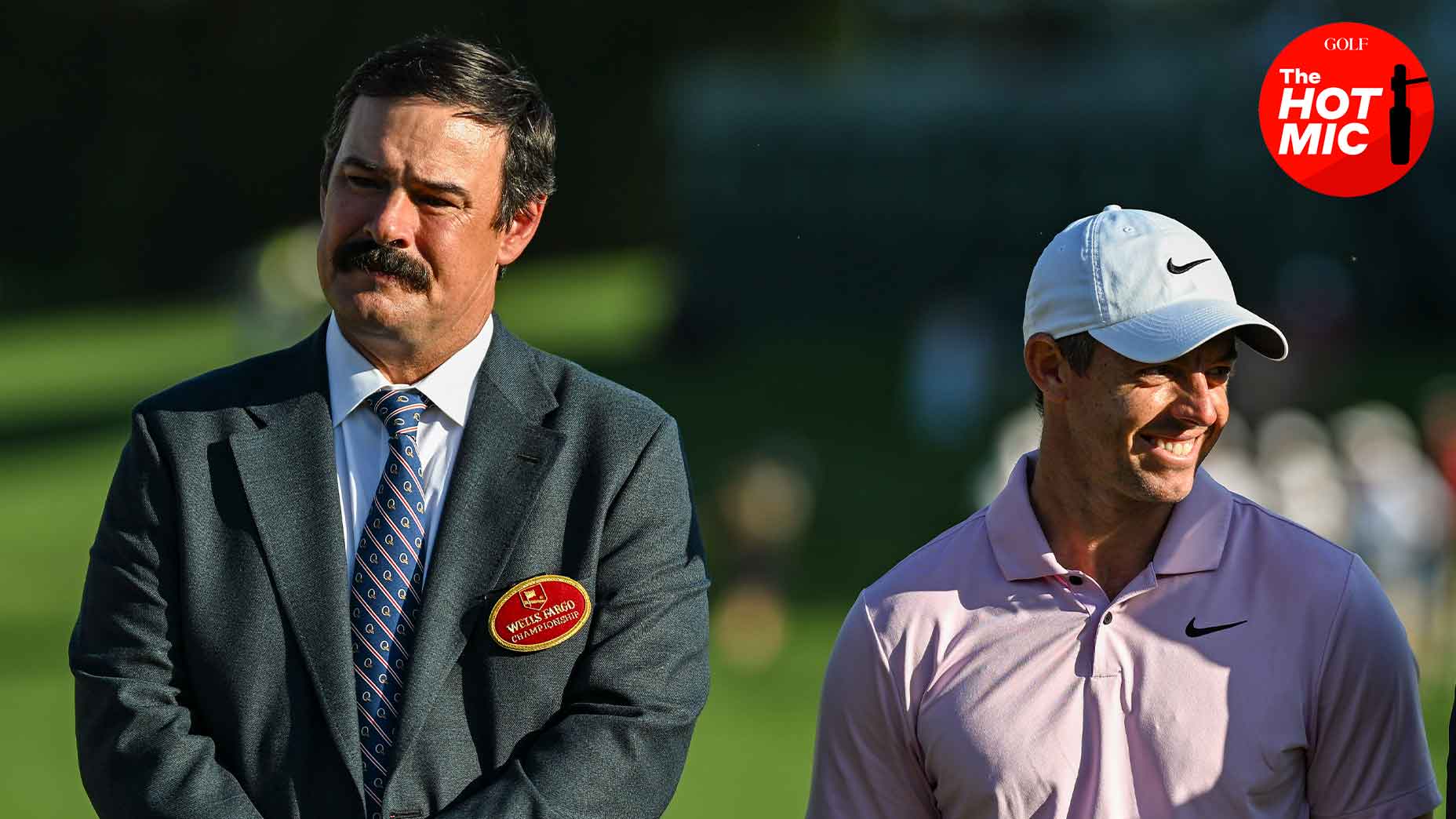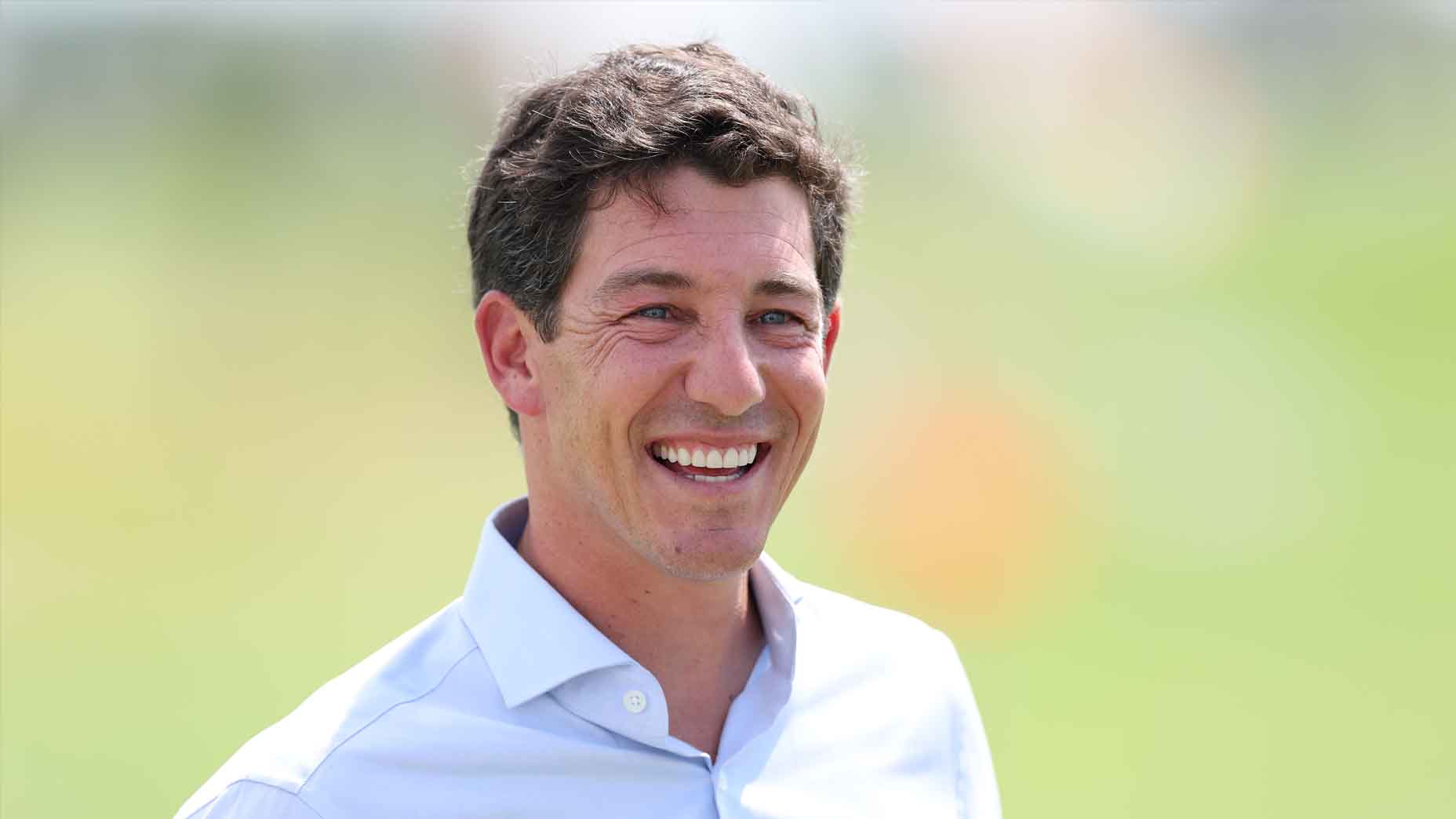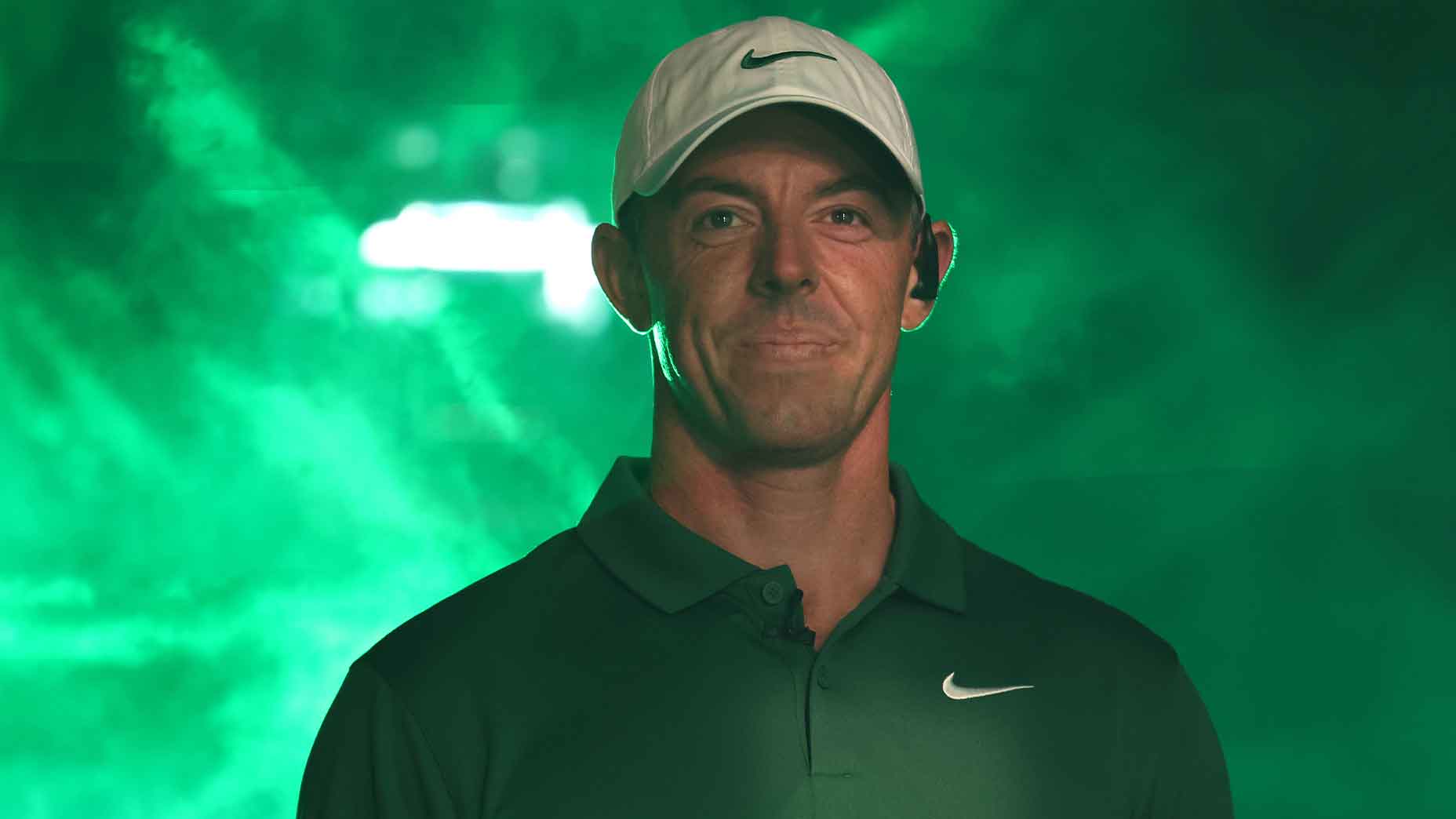It is golf TV’s original “chicken or egg” argument, and it has never been in clearer view than during the sport’s great two-week teamplay stretch in late September.
On one side of the ledger was the Ryder Cup, golf’s de facto Super Bowl, playing its fifth-straight blowout. The tournament was never particularly close, not with the Euros stomping the Americans during three of the first four sessions, eventually cruising to a painless victory early in the afternoon during Sunday singles — and it has not been particularly close in some time. Yet it was an absolute business bonanza for all parties involved, by all accounts. NBC backed up a Brinks truck worth of advertisers for the broadcast, a massive production that was the most-watched ever internationally (though ratings sagged in the U.S.); while the PGA of America and DP World Tour had no problem filling their massive hospitality buildouts with corporate clients, their hulking merchandise tent with a zig-zagging line, or their 5,000-seat 1st tee grandstand with people.
On the other side of the ledger, meanwhile, was the Solheim Cup, playing its third-straight nailbiter. The tournament was close from the very start, so close it actually ended in a tie, which resulted in the Europeans retaining the Cup. When hometown hero Carlota Ciganda closed out Nelly Korda in a breathtaking finish in front of the Spanish faithful, she delivered golf one of the best moments of the year, the sort of instant classic, storybook ending that only comes around every once in a while. Yet it was not a business bonanza, or not nearly as much of one as its male counterparts. The LPGA and LET held significantly more modest seating throughout the grounds, which were packed but not overloaded; maintained a significantly smaller merchandise area; and welcomed significantly fewer corporate clients. Fortunately, the tournament didn’t need to worry about a Euro victory obscuring ratings on NBC — it wasn’t even put on the broadcast network! Golf Channel handled coverage all week long while a shoestring production crew struggled to show even the bare minimum of tournament coverage.
In short, there is no question which of the two tournaments was more compelling to watch, and there is also no question which of the two tournaments earned more viewer attention. Thus, the chicken or the egg: how can larger audiences find women’s golf if it’s not regularly on TV? And how can women’s golf regularly be on TV if it’s not watched by larger audiences?
This paradox has been circling women’s golf for as long as most people involved with the sport can remember — and now the LPGA is exploring new ways to solve the issue. According to a Financial Times report from Solheim Cup, commissioner Mollie Marcoux Samaan and the LPGA are nearing an agreement with a “strategic planning partner” that will help the tour focus on enhancing its footprint and portfolio.
This agreement will run in addition to last month’s announcement that the tour was combining its sales efforts with Fenway Sports Group, but will share the common goal of helping raise the profile of women’s golf.
“It’s impossible to maximize value in any business without investment. We have this amazing product and we need to figure out how to commercialize it, monetize it and have investment come into it,” Samaan told the Financial Times. “If you think about where the future could be, the returns are there.”
The partner, which has not yet been named, will help the league seek out new investor opportunities across the corporate world with the stated goal of helping the LPGA bolster its broadcast coverage — the Solheim Cup in particular.
“I’m 100 percent convinced that if we got even a small percentage of the investment made in the Ryder Cup, the Solheim Cup could be a huge home run for players, for fans, for broadcasters, for sponsors,” said Marcoux Samaan.
‘Girl power!’ 12 questions after Lexi Thompson’s day on the PGA TourBy: Nick Piastowski
The bigger question seems to be: how would a new investor help the LPGA do that? One avenue, as we first outlined during the Solheim Cup, is via production budget. Presently, the PGA Tour helps to foot the bill for the production costs of its broadcasts, an effort that allows the Tour to maintain a considerable standard of TV production across the entirety of its schedule.
Part of the reason for lackluster Solheim Cup TV coverage had to do with the production company hired to handle the coverage of the event, a small German-based production house named UCOM. The result was a telecast that seemed totally unprepared for a production of the Solheim Cup’s size and technical specificity.
Outside investment could help the LPGA front the costs for NBC to send its usual production team to Europe — an estimated “seven-figure” endeavor, per one NBC source — or it could allow the LPGA to work with other, more qualified production companies to improve the overall product. The investment could also help the LPGA with expanding the Solheim Cup’s television coverage in the United States, which was restricted to just 25 hours on cable television, by freeing upfront costs for NBC to justify broader TV coverage.
In any case, the money could be used to help bring the Solheim Cup into the homes of more American viewers, an effort that could help turn the Cup from its modest current form into a sort of gangbusters event on par with the Ryder Cup. After all, the Ryder Cup was once referred to in the same way the Solheim Cup is now — until it received an expanded TV deal from NBC.
As NBC learned then, and the LPGA is hoping to learn now, the audience is out there — you just have to find them.
“I think we’re sitting on a gold mine,” Marcoux Samaan said. “We need to capitalize on that.”











